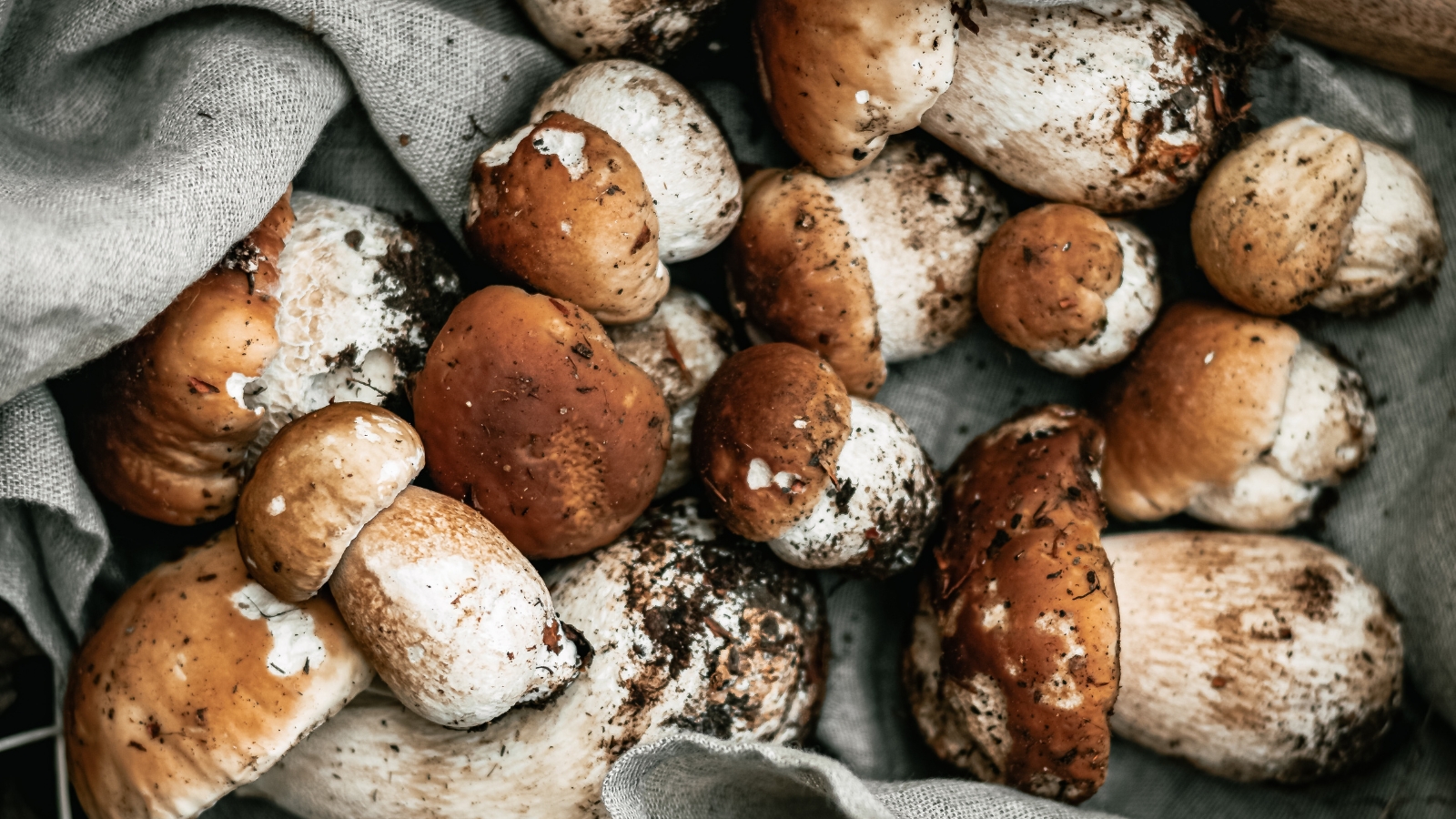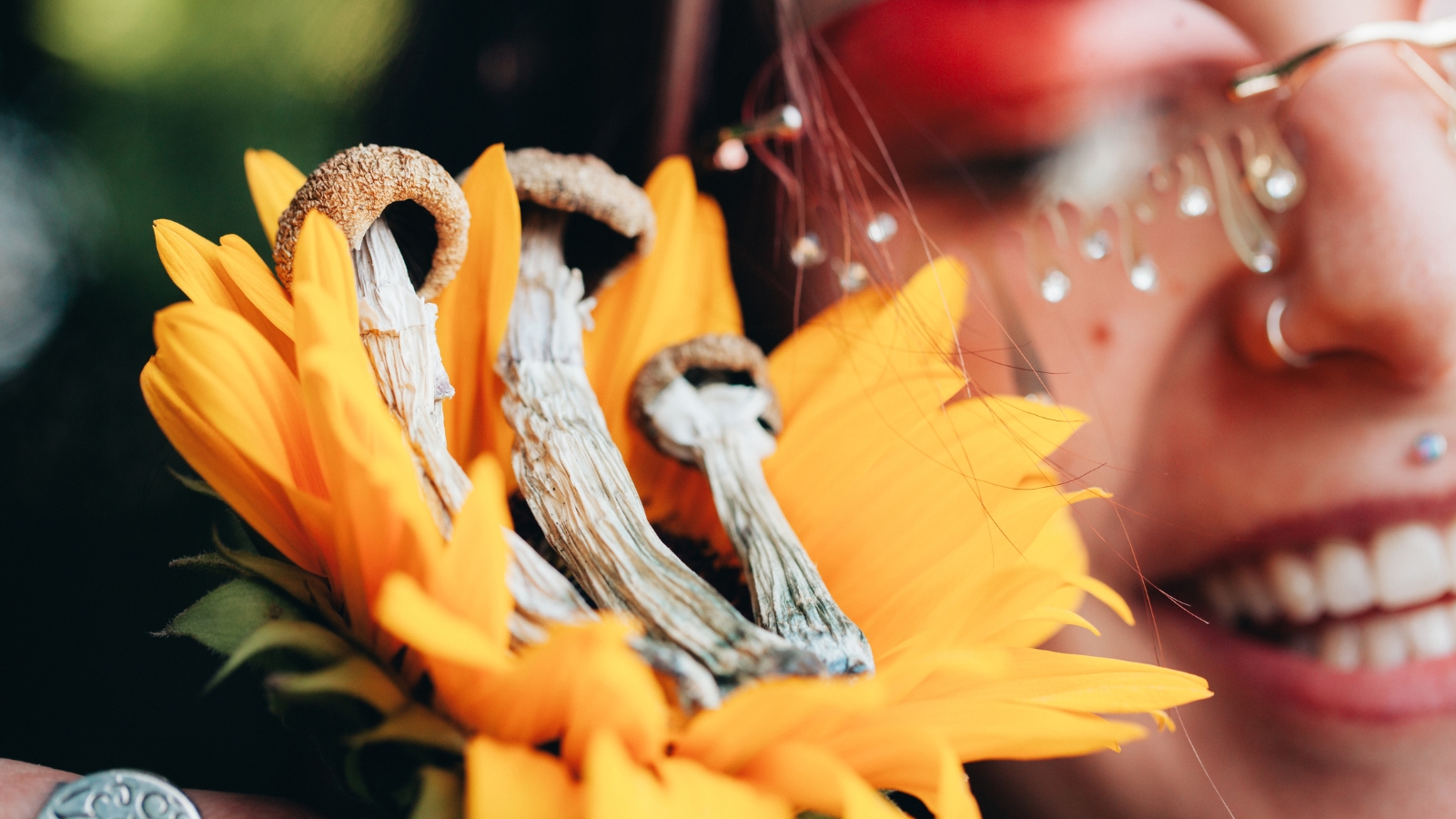If you’ve recently tripped on psilocybin mushrooms, there’s a good chance they were from one of the many strains of gold cap mushrooms. Also known commonly as cubes, boomers, and gold tops, gold caps are the most commonly cultivated psilocybin-containing mushroom. Their popularity is due to the fact that growers widely regard gold caps as the easiest species to cultivate. This is because they grow well in a variety of suboptimal conditions that don’t perfectly emulate the conditions they prefer in the wild. In this article, we’ll take a closer look at this well-known species of psilocybin-containing mushroom, including its effects, how it’s identified, and where it grows.
What are Gold Cap Shrooms?
“Gold cap” is one of several common names for Psilocybe cubensis. Of the more than 150 species of Psilocybe mushrooms, P. cubensis is the largest of its genus. It’s also the most well well-known and grown; hence its nickname as the commercial Psilocybe. The genus name derives from Greek and literally translates to “bare head,” an accurate reflection of its cap’s appearance.
P. cubensis was first discovered in Cuba by the American mycologist F.S. Earle at the turn of the 20th century. The species name, cubensis, reflects this history, literally meaning “coming from Cuba.” At the time, the species was classified as part of the Stropharia genus. However, mycologists later reclassified it into the broader Psilocybe genus. Historians believe that Spaniards first brought P. cubensis to America along with their cattle during their 16th-century missionary expeditions. Curanderos (shamans) preferred using other Psilocybe species, such as P. mexicana and P. aztecorum, in their ceremonies.

How Do You Identify Psilocybe Cubensis?
Gold cap mushrooms are easy to recognize from their large size, deep golden color, and tendency to bruise blue with age or when injured.
When gold cap shrooms are young, the caps start out bulbous and convex, maturing to be flat and wide (roughly 1.5–8 cm in diameter). The young caps are a reddish cinnamon-brown, lightening with age to a light golden brown. They have a darker golden hue in the middle and a light whitish ring around the margin. A raised area called the umbo often tops the center of the cap. The closely-spaced gills (which disperse the spores) are initially a pale white, then become deep purplish gray to black with age. The spores themselves form a dark purple-brown-to-black spore print.
The stem of a gold cap ranges from 4–15 cm in length. It tends to be thicker toward the base of the fruiting body. It’s off-white to yellowish in color and can be hollow or meaty, depending on growing conditions. Attached to the stem is a white membranous annulus. The annulus is a ring-like remnant of the partial veil that covers the gills when the mushroom is young. Both the annulus and stem bruise a bluish color when injured. This is due to the oxidation of psilocin content in the mushroom.

Effects of Gold Cap Mushrooms
Gold cap shrooms are a potent entheogen capable of generating life-transforming, mystical experiences. In his book True Hallucinations, Terence McKenna states that P. cubensis is “multifaceted and benevolent, as complex as mescaline, as intense as LSD—the mushroom, as is said of peyote, teaches the right way to live.”
Generally, the psilocybin experience produces:
- Euphoria
- Open and closed eye visuals
- Time distortion
- Altered thinking and perspective
- Profound spiritual experiences (such as feelings of unity)
The effects of gold cap shrooms typically come on within 1–2 hours and last 4–6 hours. A common dose for gold caps to bring on mystical-type experiences is around 1–3 grams of dried mushroom. In addition, you can microdose gold cap shrooms to improve mood, productivity, and overall well-being. They are microdosed at doses ranging from 0.10–0.25 grams of dried mushroom.
On the other hand, a heroic dose of 5 or more grams, especially in complete darkness, produces an intense and ineffable shamanic experience. This experience is characterized by elaborate visuals, transdimensional entity contact, and complete ego death. As with all psychedelics, the effects are heavily contingent on set and setting. This is especially true when it comes to heavy doses.

Potency Considerations
The major psychoactive compounds present in gold cap shrooms are psilocin and psilocybin. To a lesser extent, they also contain the alkaloids baeocystin and norbaeocystin. According to a 2003 study of six P. cubensis samples, the psilocin content ranges from 0.14–0.42% in the whole mushroom, while the psilocybin content ranges from 0.37–1.30%. Psilocin is the primary psychoactive component responsible for the effects of gold caps. Psilocybin is the inactive prodrug of psilocin.
An earlier study by Bigwood and Beug found that the psilocybin potency in cultivated P. cubensis can vary by a factor of four. Wild P. cubensis, on the other hand, shows a tenfold range in potency. In addition to age, several factors relating to growing condition can account for the variations in potency. These include temperature, humidity, presence (or absence) of UV light, and the number of fruitings. Interestingly, the abovementioned authors found that psilocin content increased with each subsequent flush (harvest), reaching a maximum by the 4th flush.
Another consideration to factor in is the genetics of the particular gold cap strain. There are over 40 marketed P. cubensis strains, most of which carry the name of their origins, e.g. Amazonian, Ecuadorian, Palenque, and Thai strains. In regard to potency variations, for the most part, growers hold to the motto that a “cube is a cube.” One exception is the notoriously potent Penis Envy strain, named for its unmistakably phallic appearance.

Where to Find Gold Cap Mushrooms
You can find gold cap mushrooms in tropical and subtropical climates, especially in pastures and humid grasslands. Around the world you can find them growing in the United States, Mexico, Cuba, Central America, and South America. You can also find them in parts of Australia (Queensland and New South Wales) and a handful of countries in Asia. In the United States, they grow in southeastern states, particularly in warm-weathered cattle fields where humidity stays above 85%. They most frequently grow in May or June but will grow until January.
The global distribution of gold caps intimately relates to the worldwide cattle ranching industry. In the wild, gold caps colonize the dung of grazing herbivores such as cows, horses, and goats. On manure, they will either grow alone or in small clustered groups.
As mentioned, gold cap shrooms are the most popular species for indoor cultivation. They rose to prominence after Dennis and Terence McKenna published Psilocybin: The Magic Mushroom Grower’s Guide in 1976. Gold cap shrooms grow optimally at near 100% humidity, and at temperatures between 75–81°F. The most popular methods of cultivation are the small-scale “cake methods,” such as the PF Tek method. This method is highly recommended for beginner growers. It involves a brown rice flour/vermiculite mixture and takes just 5–6 weeks in total, starting from the mushroom spores.
Disclaimer: Gold cap mushrooms is potentially categorized as an illegal drug. Reality Sandwich is not encouraging the use or making of this drug where it is prohibited. However, we believe that providing information is imperative for the safety of those who choose to explore this substance. This guide is intended to give educational content and should in no way be viewed as medical recommendations.
Contributing RS Author: Dylan Beard
Dylan is a freelance science writer and editor based in the beautiful Pacific Northwest. After finishing his physics degree and dabbling in neuroscience research at UC Santa Barbara in 2017, he returned to his first love—writing. As a long-term fan of the human brain, he loves exploring the latest research on psychedelics, nootropics, psychology, consciousness, meditation, and more. When he’s not writing, you can probably find him on hiking trails around Oregon and Washington or listening to podcasts. Feel free to follow him on Insta @dylancb88.















